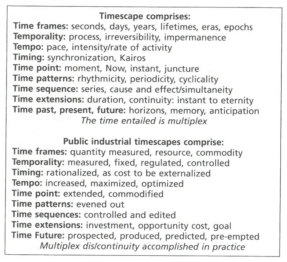Fourth, the com-pression and expansion of time structures in storiesthat compete, and the different techniques for draw-ing on temporal modalities for sensemaking in theconstruction of compelling power-political narrativesthat seek to influence the sense giving of others (seeBuchanan and Dawson 2007; Dawson and Buchanan2012)
Future research direction: Timescapes // Time compression // Post-Colonial and Feminist Time
See: Adam 1990 and 2004 See: Giddens' structuration theory
